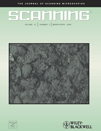Artesunate induced morphological and mechanical changes of Jurkat cell studied by AFM
Abstract
In this study, we have used atomic force microscopy (AFM) to study the morphology and mechanical property changes of Jurkat cells exposed to different concentrations of Artesunate (ART) for 24 h at single cellular level. Cell viability and proliferation assays were performed by using the Cell Counting Kit-8. The concentration of ART, which resulted in the inhibition rate >50% was selected. The AFM images revealed that the cell membrane changed and the ultrastructure also became complex. Mechanical properties of individual cell were tracked with AFM-based force spectroscopy. The force curves revealed that when a cell was exposed to the ART, the mechanical properties changed obviously. Treated cells had a lower adhesion force of 416.8±37.9 pN, whereas control group had a higher adhesion force of 1064.2±97.0 pN. The Young's modulus decreased to nearly one-third, from control group of 0.648±0.037 kPa to treated group of 0.254±0.035 kPa and the stiffness increased to nearly 1.5 times, from control group of 1.231±0.084 mN/m to treated group of 1.917±0.137 mN/m. These results suggest that ART can inhibit the proliferation of Jurkat and induce changes in the morphological structure and mechanical properties of Jurkat cells. The high resolution and high sensitivity of AFM can be used to detect morphological and mechanical properties of cells exposed to ART. The AFM may be developed to be a useful tool for detecting the cell death and evaluating the anti-carcinogen efficacy against tumor cell. SCANNING 31: 83–89, 2009. © 2009 Wiley Periodicals, Inc.




